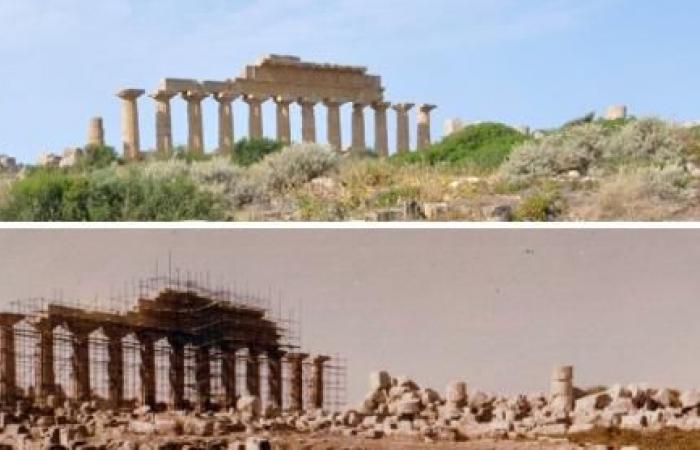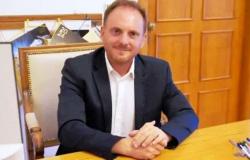
«Sicily is the cradle of culture and we are working seamlessly in valorising it.” Army Marshal Francesco Paolo Scarpinato, FdI, works, works, thanks to his studies at the hotel institute, the certainty expressed in a video that Trinacria has «25% of the world’s cultural heritage and almost three quarters of the UNESCO heritage» (nine out of 1,199!) and that culture «must become the island’s first industry» has therefore chosen to appoint the right man in the right place as director of the archaeological park in Piazza Armerina: an agronomist.
You will say: but how, an agronomist instead of an archaeologist driving one of the most important archaeological treasures on the planet that counts on the beautiful Villa del Casale, the ruins of Morgantina and the Aidone museum which hosts the famous goddess of Morgantina and the silverware of the same name sent to the Shanghai Expo as Italy’s pride? Exact. AND Carmelo Nicotraformer scientific informant for a fertilizer company, commissioner for the «fish repopulation of the Ionian coastal strip», director of the ceramic museum of Caltagirone and finally responsible for the Kamarina Park, he will perhaps turn out to be very good. He himself, in his first interviews, claimed to be yes graduate in Agricultural Sciences but to have been «a manager for 30 years: this means that I know how to manage human and economic resources by working towards objectives and for the valorization of the territory. There is therefore no need to be an archaeologist.”
It could be, in a normal country. In which the last word on archaeological projects falls to an archaeologist anyway. But is it like this in Sicily? No. Proof of this is the assembly of the Telamone-Frankenstein (90 pieces of 8 different statues) «reconstructed» in Agrigento without an archaeologist being able to get involved. Or the nomination the day before yesterday to superintendent for cultural and environmental heritage in Syracuse by Antonino Lutri whose CV as a regional employee does not include a single day spent in the vicinity of cultural heritage sites. Experiences? Decades to “genius” and civil motorization! Theme: he will have the last word, for example, on the choice to leave the Greek Theater caged in wood for another two months after the end of the classical season with Roberto Bolle (14 July) because the mega-rock concerts have been abolished but Would Francesco Lollobrigida like an evening for the G7 agricultural guests on 27 September? Long live the respect for tourists who arrive from San Francisco or Tokyo and find one of the greatest ancient theaters bolted together in fir boards…
The question, he explains a letter from the Italian Confederation of Archaeologists, Italia Nostra, Fondazione Bianchi Bandinelli and other cultural associations sent on Saturday 22 June to the governor Renato Schifani and the Sicilian authorities but also to Gennaro Sangiuliano (to invoke superior protection from the State against the island’s trend) is not the appointment of a single agronomist or engineer but the systematic exclusion of archaeological officials from every choice that has to do with protection: «In the organizational chart of the Department of Cultural Heritage and Sicilian Identity there is only one archaeologist director of the Naxos and Taormina Park (about to retire). All the others have the following professional profiles: agronomists in the archaeological park of Selinunte, Cave di Cusa and Pantelleria, and in that of Catania and the Aci Valley; a graduate in Political Sciences from the Gela Archaeological Park; architects in the archaeological parks of Agrigento, Segesta, Himera (Iato and Solunto), Lilibeo-Marsala, Tindari, Eolie, Leontinoi and, finally, Syracuse, where the archaeological park of «Neapolis» also includes the Paolo Orsi Museum, Eloro, the Villa of Tellaro and Akrai. In reality the other archaeological parks also include, against lawall the archaeological areas and museums of the nine Sicilian provinces, with the exception of the Salinas Archaeological Museum of Palermo, which, however, is also directed by an architect».
You might say: but they are architects, not dishwashers! Real. But, with all due respect, not only can one graduate in Architecture without taking a single (optional) exam in History of Art (and let alone Archaeology!) but most of those architects, engineers, geologists, gradually disposed of in more diverse offices including agriculture, hunting, fishing and others unrelated to cultural heritage, were assumed by the Region in great clientelistic batch made at the end of the 1980s with the excuse of examining the building amnesty procedures of 1985. «How many should there have been? It wasn’t deemed necessary to write it,” he explains The ballast by Enrico del Mercato and Emanuele Lauria. «The 400 mayors of the Sicilian municipalities were given a free hand in choosing the number of people to hire, with only one constraint: they would be put under contract for 2 years, then they would have to return to their previous jobs». In the end “at least 3,500 were put under contract”.
Final result of these amnesty practices? According to Sogeea, five years ago there were 623,109 left to be disposed of on the island. No surprise. An engineer, Gaetano Buffa, hired as an amnesty technician in 1989 at the Palermo Civil Engineering Department, recalls in the aforementioned book: «There were 90 of us in all, 13 or 14 per room. We were forced to sit on the stairs. Assignments? Directives? Not even a shadow. Furthermore, our older colleagues looked at us with legitimate suspicion and locked the cupboards. One day I went to the secretary of the chief engineer and asked him, a little annoyed, what our tasks were. He answered me seraphically: “Take a walk in via Maqueda”. In a year there I don’t think I examined a single project.”
They were “largely freelancers who had left their own business for a contract worth 1,000,000 lire per month, but above all for the prospect of a permanent job”. Bet won. From governor to governor, they were all stabilized without a competition as officials. And on May 15, 2000, on the joyful anniversary of the establishment of the autonomous Sicilian Region in 1946, with the cry of “todos caballeros” they all became leaders. And ready to manage archaeological sites, without the appropriate if not mandatory qualifications. With sometimes paradoxical results as in the case of Felice Crescente who, having made a career in the reclamation consortia and then being chosen as director of the immense Selinunte, is skewered on Facebook for the conditions in which the Greek park finds itself kept in order in the most popular parts by tourists but for the rest, including the area behind the famous Temple C on the Acropolis, abandoned to the undergrowth whose roots relentlessly bite into the ruins: but how, tu quoque agronomus?





